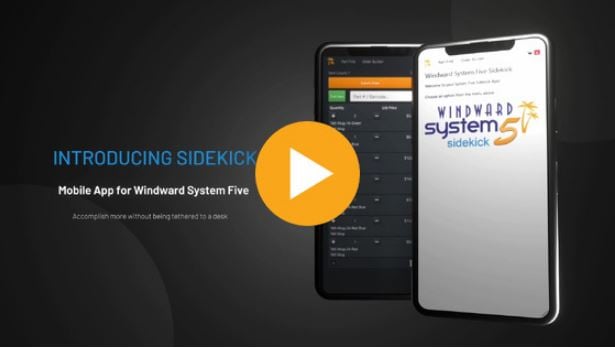Topic Overview
System Five e-Bound Book's combined abilities of tracking, searching, and reporting give licensed manufacturers, dealers and retailers access to required information quickly. This reduces the effort, time and money spent in the day-to-day management of ATF record-keeping and makes ATF audits a breeze.
System Five e-Bound Book is a self-contained electronic system that allows you to access detailed reporting information easily, without relying on paper/manual systems for any of the required information.
The bound book report displays committed entries in two formats: the Audit Trail format and the FADR (Firearms Acquisition and Disposition Record) format. Both formats have robust query options and filters that are customizable to your business needs and that are particularly handy during an audit by your ATF inspector. The report can be easily printed or exported to (*.xls) format with just a click of a button.
Audit Trail Format
Access
To access the Audit Trail report:
- Navigate to Bound Book Report and click the [Report] tab.
- Click [Build] to generate the report (Figure 1).

Figure 1. Generating The Audit Trail Report
By default, the Audit Trail Report displays a history of firearm entries that are ordered based on sequence number (i.e., audit trail number) (Figure 2). The sequence number is permanent and is generated in the order in which the entries were created. The first two digits of the sequence number represent the department that completed the transaction.

Figure 2. Default Display of Audit Trail Entries
You can either print the Audit Trail report by clicking the [Print] button or export it to (*.xls) format by clicking the [Export]
button or export it to (*.xls) format by clicking the [Export]  button on the toolbar menu.
button on the toolbar menu.
Key Information
The Audit Trail report is a comprehensive solution that provides unit information, transaction dates, as well as acquisition and disposition account details. The report displays firearm transactions by type (Table 1).
Figure 3 identifies key information displayed on the Audit Trail report.

Figure 3. Key Information Displayed on Audit Trail Report
Transaction Type | Description |
Purchased | Firearm acquired through a Purchase Order. |
Sale | Firearm disposed to the customer. |
Returned to Supplier | Firearm returned to the supplier through a Purchase Order. |
Trade-in | Firearm brought in for trade (typically offset against a new purchase). |
In for Repair | Firearm brought in for repair. |
Out after Repair | Firearm previously sent for repair has been disposed to the customer. |
Table 1: Transaction Types Displayed on Bound Book Report
Query Options
You can query the Audit Trail report to show acquisitions, dispositions, specific serial numbers, FFL/NICS numbers, and transaction types, depending on your business needs. After selecting a query option, click the [Build] tab to re-generate the report based on the newly applied filter criteria.
The [Show Held Only] query option displays only the firearms that are still in your possession (Figure 4).

Figure 4. [Show Held Only] Query on Audit Trail Report
The [Show Disposed Only] query option displays only the firearms that have been disposed of (i.e., are no longer in your possession) (Figure 5).

Figure 5. [Show Disposed Only] Query on Audit Trail Report
The [Filter Options] query option allows you to sort your acquisitions and dispositions by either including or excluding transaction types (trade-ins, purchases, or returns to suppliers) and/or FFL and NICS numbers. (In the example illustrated in Figure 6, the report output is based on the inclusion of trade-ins only.)
Note: If you are not getting the desired results for your query, check for any filter(s) that may be affecting how the report displays.

Figure 6. [Filter Options] Query on Audit Trail Report
The [Serial Search] query option allows you to look up a specific serial number. (In the example illustrated in Figure 7, the report output is based on the inclusion of serial number 130 only.)

Figure 7. [Serial Search] Query on Audit Trail Report
Comments
The Audit Trail report displays the comment(s) entered either at the time of the review of non-committed entries or after committing the entries to the bound book. You can also enter comments directly on the Audit Trail report (Figure 8) as follows:
- Click the [Comments] tab to call up the Bound Book Notes dialog box.
- Enter the comment in the Bound Book Notes dialog box. To add more than one comment, click the [Add] button.
- Click [OK] to record the comment(s).
Comments are displayed in the lower portion of the transaction entry (for an example, see Figure 9) and are date-stamped.

Figure 8 Entering Comments on Audit Trail Report

Figure 9 Comment Displayed on Audit Trail Report
Edit History
The Audit Trail report creates separate entries for transactions modified after being committed to the bound book. Original entries are retained and displayed in strikethrough text format. Entries that contain edits are listed below the original entries and contain mandatory comments (entered prior to the recommitment) explaining the reasons for the edits (Figure 10).

Figure 10. Original and Edited Entries Displayed on Audit Trail Report
FADR Format
Access
To access the FADR report:
- Navigate to Bound Book Report and click the [FADR] tab.
- Click [Build] to generate the report (Figure 11).

Figure 11. Generating The FADR Report
By default, the FADR report displays a history of firearm acquisition and disposition entries that are ordered based on transaction date (Figure 12). Unlike the Audit Trail report, the FADR report does not display the sequence number.

Figure 12. Default Display of FADR Entries
You can either print the FADR report by clicking the [Print] button or export it to (*.xls) format by clicking the [Export]
button or export it to (*.xls) format by clicking the [Export]  button on the toolbar menu.
button on the toolbar menu.
Key Information
The FADR report is a comprehensive solution that provides unit information, transaction dates, as well as acquisition and disposition account details.
Figure 13 identifies key information displayed on the FADR report.

Figure 13. Key Information Displayed on FADR Report
Query Options
You can query the Audit Trail report to show acquisitions, dispositions, specific serial numbers, FFL/NICS numbers, date ranges, and transaction types, depending on your business needs. After selecting a query option, click the [Build] tab to re-generate the report based on the newly applied filter criteria.
The [Show Held Only] query option displays only the firearms that are still in your possession (Figure 14).

Figure 14. [Show Held Only] Query on FADR Report
The [Show Disposed Only] query option displays only the firearms that have been disposed of (i.e., are no longer in your possession) (Figure 15).

Figure 15. [Show Disposed Only] Query on FADR Report
The [Filter Options] query option allows you to sort acquisitions and dispositions by either including or excluding transaction types (trade-ins, purchases, or returns to suppliers) and/or FFL and NICS numbers in conjunction with inventory categories. By using this query, you can generate multiple bound book reports based on specific filters. You can save the query to make it available for future use. (In the example illustrated in Figure 16, the report output is based on new rifles disposed to customers holding NICS numbers.)
To use the [Filter Options] query option:
- Uncheck the [Show all Categories] option;
- Select the inventory categories you want to include;
- If desired, apply Acquisition/Disposition filters;
- Name the query;
- Save the query; and
- Build the report.
Note: If you are not getting the desired results for your query, check for any filter(s) that may be affecting how the report displays.

Figure 16. [Filter Options] Query on FADR Report
The [Transaction Date Filter] query option allows you to retrieve bound book entries for a specific date range. To query the FADR report by a date range, enable this option and then specify the range either by entering the dates manually (MM/DD/YYYY format) or by picking the dates from the drop-down calendar (Figure 17).

Figure 17. [Transaction Date Filter] Query on FADR Report
- The [Serial Search] query option allows you to look up a specific serial number. (In the example illustrated in Figure 18, the report output is based on the inclusion of serial number 130 only.)

Figure 18. [Serial Search] Query on FADR Report
Comments
The FADR report displays the comment(s) entered either at the time of the review of non-committed entries or after committing the entries to the bound book. You can also enter comments directly on the FADR report (Figure 19) as follows:
- Click the [Comments] tab to call up the Bound Book Notes dialog box.
- Enter the comment in the Bound Book Notes dialog box. To add more than one comment, click the [Add] button.
- Click [OK] to record the comment(s).
Comments are displayed in the Reviewed column (for an example, see Figure 20).

Figure 19. Entering Comments on FADR Report

Figure 20. Comment Displayed on FADR Report
Edit History
Edits to committed entries are listed in the Disp. Addr/License/4473 Serial column, with added information marked by the [+] symbol. The Comments column displays the trail of edits (original text and modified text) as well as mandatory comments (entered prior to the recommitment) explaining the reasons for the edits. An example of an amended entry is shown in Figure 21.

Figure 21. Key Information Displayed on FADR Report




